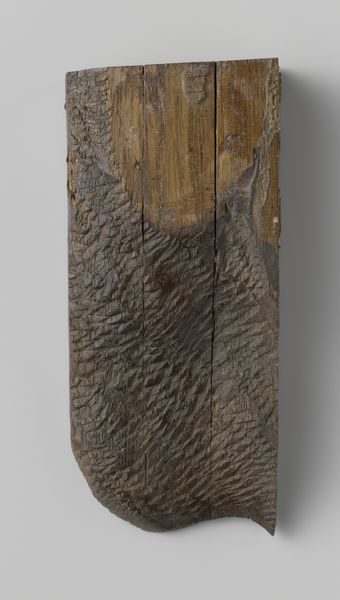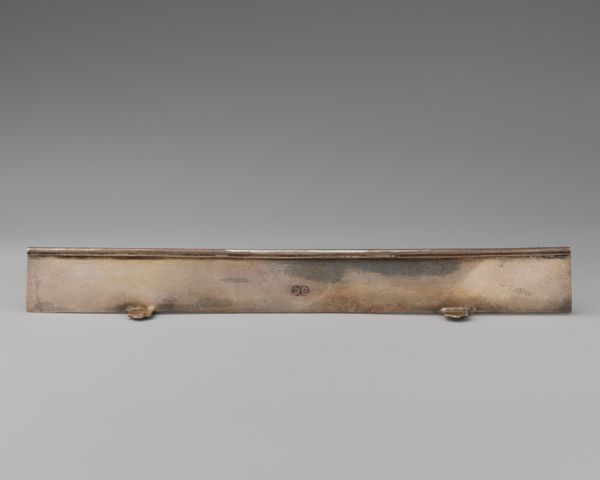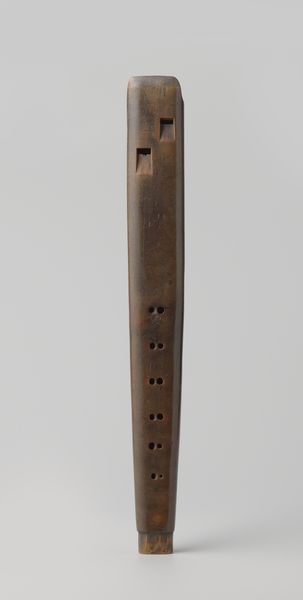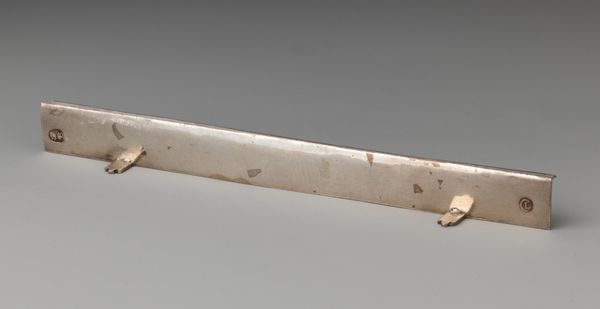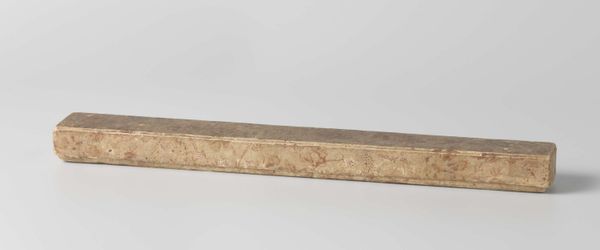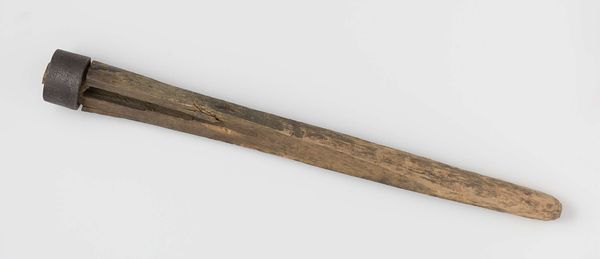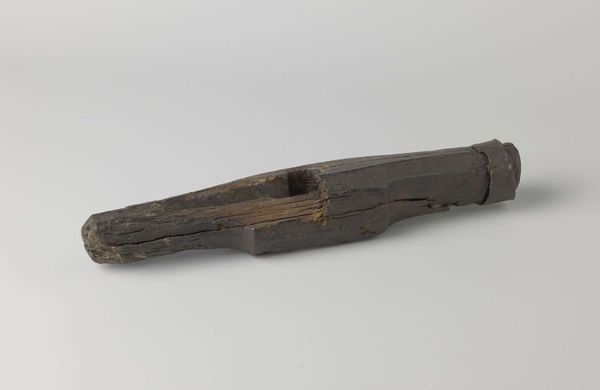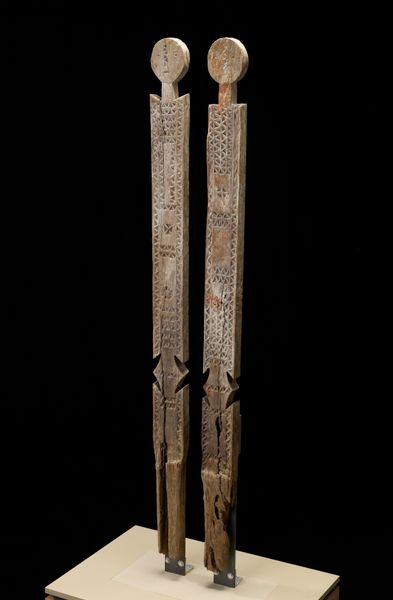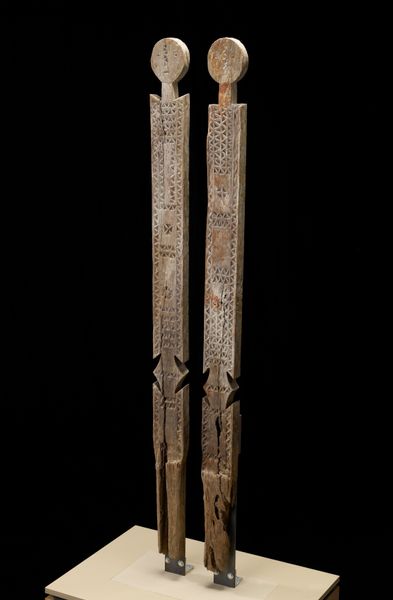
#
3d model
#
3d printed part
#
plastic material rendering
#
virtual 3d design
#
3d shape
#
prop product design
#
metallic object render
#
product mock up
#
3d modeling
#
product render
Dimensions: height 53 cm, width 12 cm, depth 4 cm
Copyright: Rijks Museum: Open Domain
Curator: Standing here, looking at this rather unassuming piece, what leaps out at you? Editor: An immediate sense of unfinishedness, a brutal simplicity in the way the wooden core is bisected by what looks like a landscape of textured silver. The contrast, both visual and tactile, is quite striking. Curator: Precisely. We are looking at a fragment of sorts. It's called "Plint van de Kruisiging:" or "Base of the Crucifixion," a work dating back to about 1475-1477, carved by Adriaen van Wesel. It’s currently held in the collection of the Rijksmuseum. Editor: So, this was originally part of a larger composition? And just a base? It seems almost too aggressively rendered for such a functional piece. Is this a stylistic statement on sacrifice? The rough, almost violent texture hints at suffering... Curator: It makes me consider the invisible narratives art possesses. Just imagining what was above this plinth—a representation of immense religious weight and then to see what is left over seems like an incredible amount of trauma frozen in place. Editor: Indeed. It is impossible not to interpret the choice of the materials through the lense of late medieval culture. We're not simply talking about adornment or aesthetics but something almost brutally grounded. The silver acts as a metaphorical terrain wherein salvation unfolds or fails to, it's the ground upon which larger power dynamics play out, whether that's divine or entirely, grimly, human. Curator: Absolutely! It feels less about faith for faith's sake, and more a somber meditation on power, presence, or the burden of grief. What's amazing is that a component this raw still evokes reflection after all these years, a dialogue about not just religious narrative but something fundamentally about structure...literally and otherwise. Editor: Yes, "base" itself denotes power and social hierachies, which this piece engages with but seems to deconstruct simultaneously... Makes you question what these figures that are now absent represented, who would it include? Would those who stand at the bottom looking up be given agency or humanity? Curator: It serves almost like a stage of absence on which all subsequent iterations and questions may play out and find space...a brutal yet beautiful thing. Editor: Right, an incomplete theater to the complex history that still informs us.
Comments
No comments
Be the first to comment and join the conversation on the ultimate creative platform.
